Introduction
In today’s rapidly evolving business landscape, the importance of AI contracts is growing exponentially. As Artificial Intelligence (AI) continues to revolutionize industries and drive innovation, businesses increasingly rely on AI contracts to navigate the unique considerations and risks associated with AI projects. For the purpose of this article, ‘AI contract’ refers to a legally binding agreement between two or more parties that outlines the parameters and obligations for AI projects. These contracts cover a wide range of AI technologies that are at the forefront of innovation and commonly used across various industries, such as Machine Learning (ML), Computer Vision, Natural Language Processing (NLP), Robotics, and more.
This first article will unravel some of the key considerations in AI contracts. We explore some of the AI contract’s crucial aspects, from addressing ambiguous language to handling incomplete provisions. Additionally, we discuss the nuances of different types of breach. Through presenting proactive measures and precise language, we empower businesses and innovators to confidently navigate the complexities of AI projects while minimizing the likelihood of legal disputes.
1- Addressing Ambiguous Language in AI Contracts
A pivotal focal point within AI contracts resides in the adept handling of ambiguous language, as AI technology evolves rapidly and brings new terms and concepts that need careful definition. Ambiguity can create significant challenges and lead to disputes between parties involved in an AI project. To ensure a smooth and successful collaboration, it is crucial to lay a strong foundation through precise language and clear definitions.
In this section, we’ll explore the issue of ambiguous language in AI contracts and discover key strategies for mitigating ambiguity. By promoting effective communication and shared understanding, we can harness the true potential of AI and craft contracts that protect the parties’ interests.
a- Importance of Clear Definitions
When delving into the intricacies of AI contracts, the significance of clear definitions cannot be overstated. Precision in defining terms plays a pivotal role in eliminating ambiguity and establishing a common understanding among the parties involved. This section explores the criticality of precise language and how it fosters effective communication and collaboration in the realm of AI projects.
While the definitions section may seem meticulous and lengthy, it is pivotal in eliminating ambiguity and promoting a shared understanding between the parties. By carefully defining each term used throughout the contract, we establish a common language that leaves no room for misinterpretation. This is particularly important in AI contracts, where technical jargon can easily lead to confusion.
In my own drafts of contracts, I often encounter clients who may express surprise upon seeing a comprehensive definitions section that lays out clear and precise terms. Initially, they might question the need for such an extensive list of defined terms, unaware of the potential consequences that can arise from ambiguity in contracts. It is crucial to emphasize that defining terms is not just a contractual formality but a vital aspect of ensuring the contract’s effectiveness and minimizing potential disputes.
When contractual language lacks clarity and specific definitions, it opens the door to ambiguity and uncertainty. In the event of a conflict or disagreement between the parties, the interpretation of the contract’s terms becomes a crucial factor. If left to the court’s discretion, the outcome of such an interpretation may not align with what was originally envisaged by the parties.
It is crucial to understand that the absence of clear definitions can lead to differing understandings of key provisions, potentially resulting in protracted legal battles and added costs. Disputes arising from ambiguous language may hinder the progress of AI projects, leading to project delays or cancellation and financial losses for the involved parties with other possible ramifications.
Ambiguity in AI contracts can create significant challenges and lead to disputes. For example, consider a contract between a technology company and a client to develop and deploy an AI-powered chatbot. If the contract states that the chatbot should provide an “optimal user experience” without defining the term, ambiguity may arise. The parties may have differing interpretations of what constitutes an optimal user experience, leading to disagreements and consequent potential legal battles.
For instance, the defined terms serve as the foundation for the AI contract. They provide clarity and precision, setting the stage for a smoother collaboration between all stakeholders involved in the AI project. Without such a clear foundation, misunderstandings can arise, expectations may differ, and disputes could ensue, potentially leading to costly legal battles and project delays or annulation.
Next, we will discuss various strategies for mitigating ambiguity in AI contracts and explore how clear and specific language can foster effective communication and collaboration, paving the way for smooth and successful AI projects.

b. Mitigating Ambiguity: Strategies for Clarity
Having recognized the paramount importance of clear definitions, it is equally imperative to implement effective mitigation strategies to address potential ambiguity in AI contracts. By proactively incorporating precise language and unambiguous terms, parties can minimize the risk of misunderstandings and disputes. This section proposes practical approaches to bolster clarity, thereby ensuring a solid contractual framework for successful AI collaborations.
Specific definitions become even more critical in the dynamic and rapidly evolving field of AI. AI technologies often undergo rapid advancements, and the contract may continue to be referred to months or even years after its initial drafting. Precise definitions ensure consistent interpretation of terms throughout the contract’s lifespan, even as technology evolves.

AI contracts should provide clear and specific definitions of terms to mitigate this issue. In the above chatbot example, defining “optimal user experience” could involve specifying response time targets, accuracy benchmarks, and customization requirements. Another example is when drafting an AI contract for a language translation tool, instead of stating “high accuracy,” the contract could specify an accuracy rate, such as achieving a minimum of 95% correctness in translations. By eliminating ambiguity through precise language, parties can minimize the risk of misunderstandings and disputes.
Integrating this best practice of providing clear definitions into AI contracts elaborates a proactive approach to risk mitigation. It enables parties to confidently manage the complexities of AI projects and mitigates potential misunderstandings that could hinder the project’s success. Furthermore, it sets a strong precedent for effective communication and collaboration between the parties, cultivating a foundation of trust from the contract’s commencement.
While the comprehensive definitions section may initially surprise the stakeholders, its importance cannot be underestimated. It serves as a fundamental tool for enhancing the contract’s enforceability, safeguarding the parties’ interests, and ensuring a harmonious partnership throughout the AI project’s lifecycle. It is crucial to incorporate this best practice in AI contracts as a strategic step towards fostering successful collaborations and reducing the likelihood of disputes in this rapidly advancing technological landscape.
In AI contracts, the definitions section is pivotal in eliminating ambiguity and promoting a shared understanding between the parties. While some may initially question the need for an extensive list of defined terms, it is essential to emphasize that defining terms is not a mere formality but a vital practice.
Now that we’ve highlighted the significance of clear definitions in AI contracts, let’s venture into another critical aspect that demands our attention: effectively addressing incomplete provisions. When it comes to AI projects, leaving out specific performance metrics and benchmarks can lead to confusion and potential disputes. To build a strong foundation for successful collaborations, we need to comprehensively outline these essential elements within the contract, as we’ll explore in the next section.
2- Handling Incomplete Provisions in AI Contracts
In AI contracts, the absence of specific performance metrics and benchmarks can lead to disputes over crucial aspects of the AI system, such as accuracy rates, response times, or security measures. To address this potential ambiguity, it is essential to comprehensively outline performance metrics and benchmarks within the contract as it will be discussed next.
a. Comprehensive Performance Metrics and Benchmarks
Incomplete or missing provisions in AI contracts can create gaps and lead to disagreements. One of the fundamental considerations is the meticulous establishment of comprehensive performance metrics and benchmarks. These metrics play a paramount role in defining the success and effectiveness of the AI system, providing a clear framework for evaluating its capabilities and aligning it with the intended objectives. For instance, failing to include specific performance metrics can result in disputes over AI system capabilities, such as accuracy rates, response times, or security measures. Without clear guidelines, parties may have divergent expectations, leading to potential legal battles.
When drafting an AI contract, precision is of the essence in delineating specific performance metrics that hold relevance to the particular AI system under consideration. These metrics may encompass accuracy rates, measuring the system’s ability to produce correct results; response time thresholds, indicating the desired speed of the AI system’s responses; and security measures, assessing its capability to safeguard sensitive data and ward off potential vulnerabilities.
Through meticulous and precise definitions of these performance metrics, we proactively mitigate any potential ambiguities or misunderstandings that may arise. This approach ensures a solid foundation for the AI contract, safeguarding the interests of all parties involved. A generic phrase such as “high accuracy” can be susceptible to varying interpretations, potentially leading to disputes in the future. However, specifying a precise accuracy rate of, for example, 95% or higher sets an unequivocal and measurable standard that both parties can readily comprehend and agree upon.

Including comprehensive performance metrics and benchmarks in AI contracts facilitates clear expectations and enable continuous monitoring and evaluation of the AI system’s progress. This feature empowers the involved parties to assess whether the AI system aligns with the desired outcomes and promptly identifies any areas that may necessitate improvement or optimization.
Furthermore, these performance metrics form the foundation for ascertaining the success of the AI project and its readiness for acceptance. When the AI system consistently meets or surpasses the specified benchmarks, it signifies its acceptability and readiness for deployment. Conversely, if the system falls short of the defined metrics, it may trigger predetermined remedies or corrective actions outlined in the contract.
In summation, establishing comprehensive performance metrics and benchmarks within AI contracts is a critical pillar for ensuring transparency, clarity, and accountability throughout the AI project’s lifecycle. Precisely defining these metrics fosters a collaborative effort toward achieving the project’s objectives while significantly diminishing the likelihood of disputes or misunderstandings. Undoubtedly, these metrics represent an indispensable aspect of risk mitigation and contribute to the overall success of AI projects within our rapidly evolving technological landscape.
b. Technical Specifications and Acceptance Criteria
An integral facet in effectively handling incomplete provisions within AI contracts lies in incorporating detailed technical specifications and acceptance criteria. Incomplete or vague provisions can result in significant gaps and disagreements between the involved parties. To circumvent such challenges, AI contracts should clearly delineate the technical specifications and the criteria for accepting the AI system.

AI projects often require a precise set of technical specifications to ensure the smooth functioning of the AI system. These specifications may include hardware and software requirements, compatibility with existing infrastructure, data storage and processing capacities, and other technical parameters critical to the project’s seamless implementation.
Defining these technical specifications provides a mutual understanding of the infrastructure and resources needed to support the AI system’s operations. When all parties are aware of the necessary technical requirements, they can allocate the appropriate resources and avert potential delays or complications arising from inadequate preparation.
In addition to technical specifications, AI contracts should incorporate clear and objective acceptance criteria. These criteria establish the conditions under which the AI system will be deemed acceptable and ready for deployment. The acceptance criteria provide a standardized approach for evaluating the AI system’s functionality by outlining specific performance thresholds and targets.
Incorporating acceptance criteria within the AI contract ensures that both parties have agreed upon a predetermined set of performance measures. These criteria also act as a reference point for assessing the AI system’s compliance with the contract’s requirements, leaving no room for subjective interpretations that may lead to disputes.
Moreover, AI contracts should outline the process for testing, evaluating, and verifying the AI system’s performance against the specified technical requirements and acceptance criteria. By incorporating a structured approach to testing, both parties can systematically assess the system’s functionality and identify any shortcomings or areas that require improvement.
To address such issues, AI contracts should comprehensively outline performance metrics and benchmarks.
For instance, contracts can define the desired accuracy rate, response time thresholds, or data security standards. By establishing specific provisions, parties can minimize disputes related to performance expectations.
Furthermore, the following strategies can be considered to reduce ambiguities in definitions and clarity:
- Comprehensive Definition of Performance Metrics
The AI contract should clearly define and specify the performance metrics and benchmarks relevant to the AI system. This may include accuracy rates, response time thresholds, security measures, or any other specific metrics that are critical to the project’s success.
- Technical Specifications and Standards
Incorporate technical specifications and industry standards within the contract that outline the expected performance levels for the AI system. These specifications can provide a reference point for measuring and evaluating the system’s performance, ensuring that both parties have a shared understanding of the expected outcomes.
- Clear Acceptance Criteria
Establish clear acceptance criteria that define when the AI system will be considered acceptable or meet the agreed-upon standards. This may involve setting specific thresholds or targets that need to be achieved before the system is deemed to have met the performance requirements.
- Testing and Evaluation Procedures
Outline the procedures for testing, evaluation, and verification of the AI system’s performance. This may include the use of test datasets, validation processes, or third-party audits to assess the system’s performance against the defined metrics.
- Remedies for Performance Failures
Include provisions in the contract that outline the remedies available in case of performance failures or non-compliance with the specified metrics. This may involve provisions for remedies such as rework, corrective actions, or financial penalties in case the system fails to meet the agreed-upon performance standards.
- Collaboration and Communication
To foster open communication and collaboration between the parties throughout the AI project, a clause on “Collaboration and Communication” can be added to the AI contract. This clause can include the following provisions: “Regular progress updates, status meetings, and performance reviews can help identify and address any performance issues early on, minimizing the likelihood of disputes.”
- Dispute Resolution Mechanisms
Incorporate dispute resolution mechanisms, such as mediation or arbitration, into the contract to provide a structured process for resolving disagreements related to performance metrics. These mechanisms can help parties reach a resolution more efficiently and cost-effectively than traditional litigation.
By implementing these mitigation strategies, parties can minimize the risk of incomplete provisions and disputes regarding AI performance metrics in an AI contract. Clarity, specificity, and effective communication are key to ensuring that both parties have a shared understanding of the expected performance levels and can effectively address any potential issues that may arise.
Conclusion
In the rapidly evolving landscape of AI projects, AI contracts are essential tools to navigate the complexities and risks associated with artificial intelligence. This article has unraveled some of the key considerations in AI contracts, emphasizing the significance of addressing ambiguous language and handling incomplete provisions. Clear definitions and comprehensive performance metrics provide a strong foundation for successful AI collaborations and help minimize the risk of disputes. By proactively implementing mitigation strategies, businesses and innovators can confidently forge ahead with AI projects while safeguarding their interests.
As we bid farewell to Part 1, our legal journey continues with even more captivating topics awaiting in the next Article.
Pictures: No attribution is required
- [email protected]
- Key Contact Mrs. Malak Trabelsi Loeb, Trabelsi Loeb Legal Consultants
- [email protected]
Disclaimer:
The insights presented in this article represent the views and opinions of the author and are not intended to be an endorsement of any specific method or practice, nor are they intended to be legal advice. These insights do not reflect the official policy or position of any organization or institution the author is affiliated with or associated with. This article is provided for general informational purposes only. Readers should consult with appropriate professional advisors for specific guidance. The author provides no warranty or guarantee regarding the accuracy, completeness, reliability, or suitability of the information in this article. Any reliance placed on such information is strictly at the reader’s own risk.













